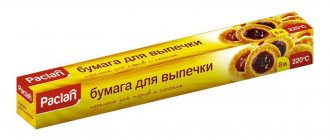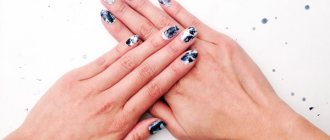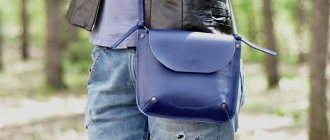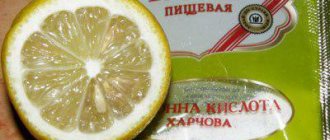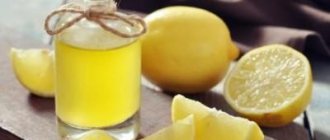Manufacturing and composition
The eco-friendly, wear-resistant, durable material is based on viscose, polyester and cotton fibers. The adhesive layer can be polyamide, polyethylene or ethylene vinyl acetate, each with its own melting point.
The adhesive component is applied in the form of dots evenly spaced from each other, the size of semolina or boiled millet. When applied continuously, the glue forms a thin, slightly glossy film. Dublerin can be white, black or grey. Its density depends on the type of woven base.
How to glue non-woven fabric?
Using interlining interlining is easy if you know the technology of its application and have some experience working with it. You can strengthen the fabric in a few minutes, but it is important to avoid mistakes and be careful.
Advice. At the stage of cutting the gasket, you should pay attention to the direction of the fibers. Even though the material is non-woven, it usually stretches across. It is better to cut it “along the grain”.
How to glue non-woven fabric to fabric step by step:
- Identify and combine the adhesive side of the interlining (characteristically shiny and rough) and the wrong side of the fabric (usually lighter). It is important not to mix it up, otherwise the gasket will end up on the front side of the part or stick to the iron.
- Cut the part from duplicate material. It should be slightly larger than the fabric part so that the gluing is smooth. All excess after gluing can be cut off with scissors.
- Heat the iron to the required temperature (usually 130-150 degrees). Disable the steam function unless it is a special material that is steam bonded.
- Glue the pad correctly, pressing the soleplate of the iron for 8, 10 or 12 seconds, depending on its thickness and fabric density. No need to iron the material or pull.
- After processing, the part must “rest” for some time (15-30 minutes) so that the glue completely cools and stabilizes.
The whole process is clearly shown in the video:
Advice. If the part is large, it is recommended to use thread-stitched interlining and glue it first by lightly pressing a heated iron around the perimeter of the part. After making sure that the material does not tighten the fabric, you can glue it thoroughly.
Varieties
Nonwoven is a whole class of paper-like non-woven cushioning materials. Non-woven fabrics can be as thin as a spider web or very dense, like cardboard. There are three main varieties:
- Glue. Contains glue on one side of the material. Depending on the application technology, the adhesive forms a continuous or dotted coating.
- Non-adhesive. Doesn't have a cool coating. May be water soluble.
Thread stitching. This non-woven fabric is reinforced with thin threads to increase strength. It practically does not deform, does not stretch, but remains elastic. Can be adhesive or non-adhesive.
Adhesive
The most common type of non-woven fabric. It is widely in demand among tailors, seamstresses and needlewomen.
Adhesive interlining is very easy to use. To attach it to the fabric, you can use a regular household iron.
As a result of heating, the adhesive base softens. It becomes viscous and sticky, quickly and reliably fastening the interlining to the fabric.
Non-adhesive
Has a narrow scope. It can be peel-off and water-soluble. Non-adhesive interlining is mainly used when applying embroidery to fabric. Thanks to the non-woven base, the threads lie flat and do not pull or deform the fabric. It is also used when applying various decorative elements and appliqués to fabric.
The non-adhesive type is recommended for fabrics that do not stretch during embroidery. These are calico, linen and some mixed fabrics.
The peculiarity of the material is that, if necessary, it can be easily removed from the fabric. The tear-off interlining is removed mechanically (torn off). Water-soluble completely disappears after washing or when the finished product is soaked in water.
How to wash your hands of glue?
How to remove super glue from skin
- Soap and warm water. Mix water with liquid soap. ...
- Lemon juice. If you have delicate skin, you can replace the soap with lemon juice. ...
- Margarine or vegetable oil. The oil will help remove the glue
from the skin, softening it. ... - Washing powder. Dilute a quarter cup of powder with warm water.
Interesting materials:
How to wash painted walls? How to apply primer to a wall? What is the part of the wall above the door called? What is the part of the wall above the window called? What is the name of the artist who paints on walls? What is the name of the bottom part of the wall of a building? How to discreetly hang a shelf on the wall? How to decorate a wall in the kitchen? How to update a brick wall? How to treat a brick wall before painting?
Caring for products with dublerin
The rules for caring for the main and interlining fabrics must be the same. Without taking this point into account, you can ruin an expensive coat or dress.
Products that have been reinforced with dublerin are washed in a mode that depends on the type of main fabric. The gasket can withstand heat, as long as it is properly glued. For spinning, it is advisable to use a gentle mode. Before ironing, you need to examine the gasket; if the edges have come off, straighten them so that they do not stick incorrectly when heated.
Application
Dublerin is necessary to support the silhouette and prevent creases. With it, products, as well as some of their parts, become more rigid, dense, durable and wear-resistant. Dublerin fabric is used in the manufacture of accessories, to strengthen loops, fasteners, necks, and bottoms of products. It is used to seal collars, armholes, cuffs, and reinforce pockets, that is, elements that are subject to the greatest loads. The main fabric does not change its properties, but the product, sealed with dublerin, can withstand frequent wear, dry cleaning, and washing at temperatures up to 60°C.
Helpful information
Tips that will come in handy when removing glue from clothes:
You need to start removing the stain immediately. While the glue is fresh, it is easy to deal with using non-aggressive compounds. When it dries, it is more likely to damage the fabric.- When removing a stain, you need to consider not only the type of glue, but also the type of fabric. The more delicate it is, the more gentle the solvent should be.
- If after the procedure there are traces on things, then you can start cleaning again only when the fabric is dry. Aggressive substances can damage clothing.
- After treatment with any solvent, the item must be washed to remove any remaining glue and cleaning agent.
Read this article to learn how to remove various glues from jeans.
Useful tips
- When steaming, you must choose a mode suitable for the fabric. This will avoid damage to the product.
- After removing the tape, the trousers must be washed.
- Solvent, nail polish remover or isopropanol are suitable as a cleaning agent.
- When removing tape with any liquid, it is not recommended to apply a cotton pad to the fabric for a long time in one place. This may cause damage to your trousers.
- The tape can be removed with an iron. We place a piece of unnecessary material on the location of the cobwebs and iron it with the hot platform of an iron with a steam function. After some time, the adhesive base will remain on the underlying material.
- The duration of the removal process and effectiveness largely depend on the texture of the fabric of the product itself.
Application area
In a broad sense, non-woven is a class of paper-like nonwoven materials based on modified and unmodified, sized and unglued cellulose fibers (sometimes with the inclusion of polyester).
The material has a wide range of applications:
- Non-woven fabric is used as packaging, a screen, curtains, and a basis for applying designs and text.
- Due to its low moisture capacity and resistance to shrinkage, it has gained popularity as a material for making wallpaper.
- In medicine, water-soluble material is used for dressings, and insoluble material is used for sewing personal protective equipment (masks, gowns, etc.).
- Non-woven fabric is used as a lining or frame material to stabilize fabric in sewing and various types of needlework.
Where can you use non-woven fabric:
- strengthening parts of clothing that are subject to heavy loads: the edges of the side and bottom, the waistband of trousers, collars, fronts of jackets and jackets.
- strengthening the top and bottom of textile bags;
- machine and hand embroidery;
- applique, quilting and patchwork;
- decorating products with decorative elements;
- making toys from fabric.
Advantages over other lining materials
Dublerin is a lining material with many advantages.
He:
- durable;
- lasting;
- environmentally friendly;
- does not shed;
- does not crumble;
- does not come off;
- drapes well;
- does not allow the base material to stretch;
- practically does not wrinkle;
- does not form bends or tears.
Dublerin has another important advantage - a variety of types, differing in areas of application, adhesive component, and density of the woven base.
The disadvantages of dublerin include its expensive fabric texture, which, in principle, is also an advantage.
Kinds
Dublerin is used to strengthen parts on both drapery and cambric. In any case, the product remains as natural as before using the lining layer.
Dublerin comes in different types, among the main ones:
- Non-elastic fabric with a polyester and cotton fiber backing. This lining is used to duplicate dense heavy fabrics, including leather, as well as its substitutes. It is used for sewing outerwear, curtains, and shoes.
- Fibrous, soft dublerin on a knitted backing with one-way stretch. They reinforce shelves, as well as collars of jackets, jackets, and coats.
- The elastic stretch material is also based on knitted fiber. They are used to strengthen elements of suits, skirts, blouses, and dresses.
Table 1. Dublerin with different types of base.
| The basis | Woven | Thread stitching (50% knitwear) |
| Applying an adhesive layer | Continuous coating | Double dots |
| Stretchability | Absent | Stretches across the stitching threads |
| Color | Black White | Black White |
Cotton collar doubler is suitable for reinforcing cuffs and, of course, collars. The lining for leather and fur products is similar to a plaster. Dublerin with a chiffon base is used to strengthen thin, almost transparent products. The stretch base has dublerin, called monoelastic. A corset version is made from calico, which can withstand heavy loads.
Difference from non-woven fabric
Non-woven fabric is a moisture-resistant and fire-resistant type of lining material. It has a non-woven base consisting of cellulose and polyester. Its quilted and thread-stitched versions offer extra durability.
Compared to fiseline:
- Dublerin has a woven base and great strength.
- Dublerin is decatified before use, that is, moistened, but non-woven fabric is not. To avoid tightening, it is recommended that non-woven fabric be glued only dry and at a lower temperature.
- As for the price, dublerin is a more expensive lining material, so whenever possible it is replaced with non-woven fabric.
Principles of working with lining
Dublerin is also called thermal fabric, since a hot iron is needed to glue it. When heated, the glue melts, that is, it turns into a liquid state, envelops the threads of the main fabric, creating a strong adhesion with them. As a result, the main fabric becomes denser, becomes stiffer, and holds its shape.
Important: Dublerin is a woven type of lining. It has a shared thread, which must be taken into account when cutting out elements from it. Non-woven lining options can be cut in any direction.
Selection for ideal combination with the main material of the product
To select the adhesive material, you need to glue several test pieces of lining onto scraps of the main fabric. The samples will become hard and their color may change, such as darkening. Afterwards, all that remains is to select a sample of the desired density. Experienced seamstresses select the lining in this way for each specific case.
How to glue
To glue dublerin onto fabric with a hot iron, you need to:
Author:
Zakharova Nina Afanasyevna
I hope you like my article! If you find any shortcomings, just write to me about it! I am always ready for a conversation and will answer any questions you have, ask them!
